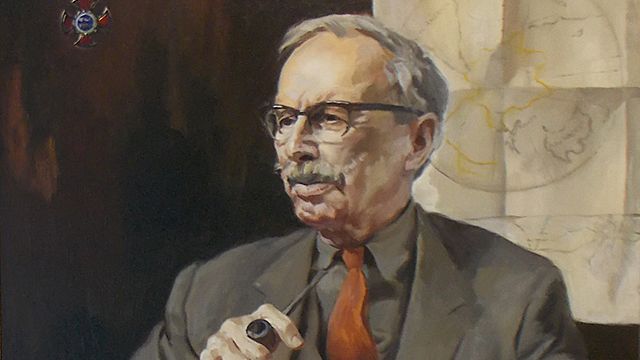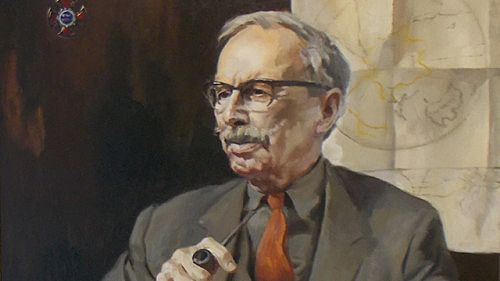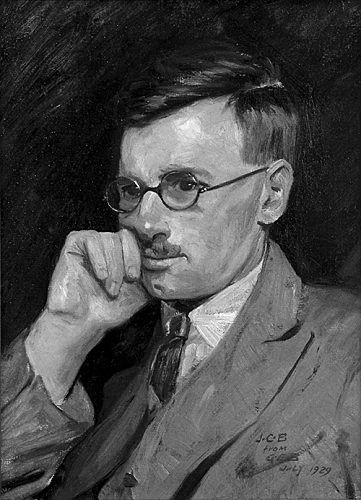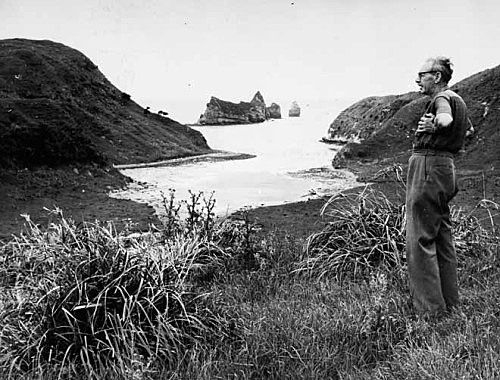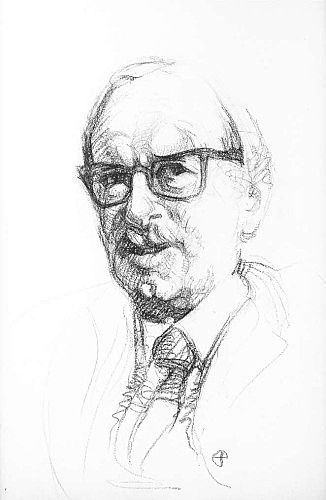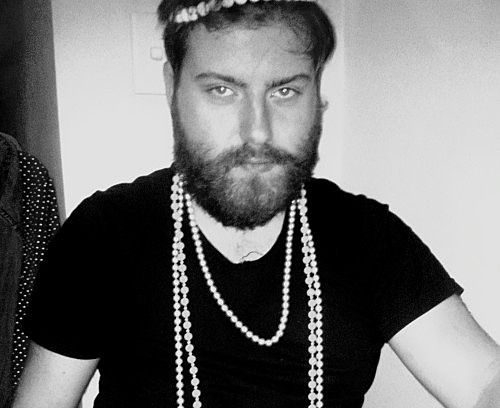A Portrait of the Researcher as a Patient Man
J.C Beaglehole's towering work on the travels of Captain Cook and the early European footsteps in Aotearoa made him a student staple for centuries - but as Will Pollard discovers, a new book of letters suggests he didn't always find it that fun.
“This has been a hell of a year. Of course other years
have been hells of years […]
but this has been the hellerest of them.”
Writing to a friend at the British Museum at the end of 1959, John Cawte Beaglehole was exasperated but not without humour. The New Zealand historian was part way through editing and publishing the journals of James Cook – a grand project, and one that’s now considered, along with a monumental biography of the explorer, to have been his life’s work.
Beaglehole is not without his critics, but the legacy of his Cook scholarship is such that his name will likely be familiar to any student of New Zealand or British Colonial history today. But those students aren't the only ones who might have a stake in his collected letters. Published together for the first time in 'I Think I Am Becoming A New Zealander': Letters of J.C Beaglehole', we see him writing on everything from architecture to politics, art and the theatre. The letters in the new collection also detail the curious events of 1932, when he was pushed from a temporary lectureship at the-then Auckland University College due to, it seems, “a somewhat inflated reputation for dangerous radicalism”.
In a few decades, he would have comfortably surpassed that little drama. No one before Beaglehole had made such a comprehensive study of Cook’s writings, while few afterwards would be able to study Cook without owing a great debt to his effort. And some effort it was - though Beaglehole had begun planning his editions of the journals in the mid-1930s,it would not be until 1967 that he would see the last of them in print (he passed away four years later).
[caption id="attachment_8834" align="aligncenter" width="361"] J.C. Beaglehole, painted by his uncle, George Butler, July 1929[/caption]
Given the years Beaglehole dedicated to his pursuit of Cook, it’s hardly surprising that the subject ends up dominating his collected correspondence. Something of both the joys and frustrations of those decades of work is revealed, though it’s the latter that seems most striking. The collection constitutes an introduction to the difficulties of carrying out a research endeavour the size of Beaglehole’s in the era before personal computers, email, the online catalogue or the digitised archive. NB: I know – the power afforded to us by the internet is, at this point in history, so obvious that to bother to point out as much causes near-physical pain. However Beaglehole’s letters repeatedly reveal the tenacity which must have been required to pull off the task he had set himself when the drafting, editing and printing of manuscripts was very much manual (rather than digital) work. Take, for example, a further section of the above letter from that “hellerest” of years:
God knows when page-proofs will begin to appear. The illustrations have taken months to finalise, & now the printers are holding them up […] A few weeks ago their managing director had the face to write to me that he thought ‘we’ hadn’t done badly so far, considering the size of the job. A year to set the text! Another year to do the paging, I suppose; & so on…
Beaglehole was writing here while working on the third (and not the final) volume of the journals, and if the pace of progress seemed painfully slow at that point, then it can’t have been for the first (or the last) time. An earlier note, this time from 1950, gives a further sense of the back-and-forth required:
The Cook business is going along fairly well. We have almost got specimen pages that I approve of, though the printer is in Birmingham; & I have turned in the text of the journal of the first voyage for setting in type. Then that comes out to me in NZ & I do the rest of the editorial work on it, & meanwhile setting goes ahead on the second & third voyages […]
Understandably, at times the work seemed interminable:
Did I say that I’d written my virtually last word for Cook vol I? Well I’ve been writing virtually last words ever since. I think it will go on for years yet, & cease only with death.
Nor did Beaglehole’s subject matter make the job easy for him. Cook, for instance, much as Beaglehole seemed to idealise him, couldn’t spell to save his life:
We must confess one thing, indeed, even in our bemused state of Hero Worship […] he the Nonpareil could not spell, he had no more idea of punctuation than my foot. Such a welter of ei & ie you never saw. Has any other seaman ever weighd anchor? Has any other journal writer written seven foolscap pages without a paragraph & without a capital letter & without a full stop or comma? Ought this to be allowed even in the Navy?
And punctuation held no sway over the Endeavour’s botanist, Joseph Banks:
I have just come to the end of J Banks’s journal, p.865 typescript, & the next thing will be to go all through it again & put in the punctuation, because it is not one of those things you can print just as it is; think of it, about 250,000 words, & hardly a punctuation mark from beginning to end. But I am unjust to JB: twice, I think, he thinks, Oh I ought to punctuate this, & then he strews commas colons semicolons & commas again thicker much thicker than leaves in Vallombrosa […] But after a page or two he gives up, the commas thin out, & soon we are adrift in the waste again. One thing he does use is the paragraph. But his capitalisation oh God his capitalisation…
[caption id="attachment_8830" align="aligncenter" width="500"]
J.C Beaglehole at Cook's Cove, Tolaga Bay, 1965 (Alexander Turnbull Library)[/caption]
Yet these hurdles were secondary to the gathering of the necessary primary sources, and the visiting of the sites of Cook’s travels for himself. This was a voyage of discovery in its own right that led Beaglehole from Wellington to England, and around the Pacific – allowing him to put Cook’s observations in context. There was, however, still the qualification of minor points of fact to be dealt with. Beaglehole’s quest to discover the reasoning behind Cook’s naming of the Poor Knights Islands, for example, reached to comical lengths:
Another subject: you know all about maps, & therefore all about the names on maps. Well, tell me, why the devil did Cook call a small group of islands and rocks off the E. NZ coast the Poor Knights? He generally gives reasons, but here gives no reason, so I assume the reason was obvious – but it beats me; & everybody nautical, Yorkshire, literary I have consulted. I have been to Shakespeare, the Bible, Brewer, guides to Yorkshire, the Pilots for the English Coast, N America, Newfoundland, Ency. Brit., cookery books. I have found out (a) there is a rock in the Bristol Channel called the Poor Knight singular (why?) (b) there is a crack in King Lear about “a poor knight” (no caps) (c) Poor Knights was the alternative name for the Knights Templars – but what would Cook know about the KT’s? (d) there is a traditional German or central European or Polish dish called Poor Knights, bread fried in egg or something. Now does the BM or the RGS or the University Intellect of the UK know of any natural feature, legend, story, nursery rhyme, popular 18th-century ballad, local landmark, tragedy, comedy, tragico-pastoral comedy, proverb, sentimental song, piece of cooker, part of a ship’s furniture, botanical nomenclature, legal terminology, sea-shell, or nautical jargon or nickname for any admiral or member of the Royal family that has anything to do with Poor Knights?”
And even having seemingly resolved some similar question of detail, there was always the possibility of later realising one’s mistake:
One or two things even make me laugh bitterly. I have a [footnote] somewhere roughly to this effect, ‘Probably some sort of eucalyptus’. I’ll say it is a sort of eucalyptus - & the commonest tree in New Caledonia, it grows in its millions. Niaouli. Then copying some solemn ass who can never have seen one in his life, I referred to its thick cork-like bark. Anything more uncorklike you never saw in your life. Thick all right, or rather the underbark is, the top isn’t – but layer on layer of quite thing paper-like stuff. Why did I copy that man? I think it may have been some fool in one of the Admiralty Handbooks. And where did he get it from?
[caption id="attachment_8831" align="aligncenter" width="326"]
Sketch Portrait of J.C Beaglehole by Evelyn Page[/caption]
The title of the collection, ‘I think I am becoming a New Zealander’, a line from one of his letters, suggests some wider importance to its contents. And certainly, to the extent that our ideas about New Zealand hinge on our understandings of Cook’s ‘discovery’ and of colonisation, it seems to follow that Beaglehole’s scholarly work has had some bearing on shaping perceptions of what it means to be a New Zealander. Beaglehole’s association with the production of New Zealand-ness was in fact an official one, having been brought into the Department of Internal Affairs to be an adviser for the New Zealand centennial of 1940. It was also initially intended that the DIA would publish his editions of Cook’s journals. This would have been, in the words of J.C. Beaglehole’s son and biographer Tim Beaglehole, “a declaration that New Zealand had, intellectually, come of age”. And even though the journals eventually only saw the light of day through the London-based Hakluyt Society, it seems fair to say that Beaglehole’s impression of a creeping New Zealand-ness remained tied to this country’s intellectual independence. Here he is in 1946, in the same letter from which the collection’s title is drawn:
I think that in the last ten years we have proved that we can think for ourselves in N.Z., and do some interesting things; and I think that we are beginning to find that life as New Zealanders can be worthwhile. It seems to me that our foreign policy is worth while, and a good deal of our domestic policy, and some of our poetry and some of our art, and some of our history; and we’re learning how to print books. Our university is getting a bit better, and we’re just starting a University press […] Perhaps as a New Zealander born I am a bit sentimental about it; but also I am in the show, and the show is a live one, not just imitation as it used to be.
Not everything has changed since Beaglehole’s day – on first moving to Auckland his two major grievances were the high rent and the poor public transport ("Nothing worth a damn at a reasonable price that isn’t appallingly expensive or situated miles out – trams are also expensive..." - but a window into the writing and research systems of his period is fascinating. Especially now that we’ve outsourced our memories, can work in real time on the same page as a colleague on the other side of the world, and can reformat a novel-length document in seconds. It turns out there's no substitute for a work ethic.
'I Think I Am Becoming A New Zealander: Letters of J.C Beaglehole'
is available now from Victoria University Press.
